第49章 7(2)
The heart then and the liver are essential constituents of every animal; the liver that it may effect concoction, the heart that it may lodge the central source of heat. For some part or other there must be which, like a hearth, shall hold the kindling fire; and this part must be well protected, seeing that it is, as it were, the citadel of the body.
All sanguineous animals, then, need these two parts; and this explains why these two viscera, and these two alone, are invariably found in them all. In such of them, however, as breathe, there is also as invariably a third, namely the lung. The spleen, on the other hand, is not invariably present; and, in those animals that have it, is only present of necessity in the same sense as the excretions of the belly and of the bladder are necessary, in the sense, that is, of being an inevitable concomitant. Therefore it is that in some animals the spleen is but scantily developed as regards size. This, for instance, is the case in such feathered animals as have a hot stomach. Such are the pigeon, the hawk, and the kite. It is the case also in oviparous quadrupeds, where the spleen is excessively minute, and in many of the scaly fishes. These same animals are also without a bladder, because the loose texture of their flesh allows the residual fluid to pass through and to be applied to the formation of feathers and scales. For the spleen attracts the residual humours from the stomach, and owing to its bloodlike character is enabled to assist in their concoction. Should, however, this residual fluid be too abundant, or the heat of the spleen be too scanty, the body becomes sickly from over-repletion with nutriment. Often, too, when the spleen is affected by disease, the belly becomes hard owing to the reflux into it of the fluid; just as happens to those who form too much urine, for they also are liable to a similar diversion of the fluids into the belly. But in those animals that have but little superfluous fluid to excrete, such as birds and fishes, the spleen is never large, and in some exists no more than by way of token. So also in the oviparous quadrupeds it is small, compact, and like a kidney. For their lung is spongy, and they drink but little, and such superfluous fluid as they have is applied to the growth of the body and the formation of scaly plates, just as in birds it is applied to the formation of feathers.
On the other hand, in such animals as have a bladder, and whose lung contains blood, the spleen is watery, both for the reason already mentioned, and also because the left side of the body is more watery and colder than the right. For each of two contraries has been so placed as to go together with that which is akin to it in another pair of contraries. Thus right and left, hot and cold, are pairs of contraries; and right is conjoined with hot, after the manner described, and left with cold.
The kidneys when they are present exist not of actual necessity, but as matters of greater finish and perfection. For by their special character they are suited to serve in the excretion of the fluid which collects in the bladder. In animals therefore where this fluid is very abundantly formed, their presence enables the bladder to perform its proper office with greater perfection.
Since then both kidneys and bladder exist in animals for one and the same function, we must next treat of the bladder, though in so doing we disregard the due order of succession in which the parts should be enumerated. For not a word has yet been said of the midriff, which is one of the parts that environ the viscera and therefore has to be considered with them.